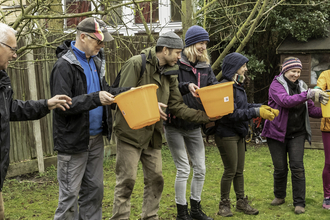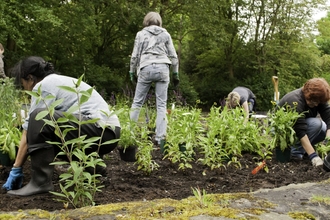If you’re reading this, I’m going to make a wild assumption that you’ve thought about being part of a community group or, better yet, you’ve thought about trying to start up a shiny new group from scratch. Great! I propose that you act as soon as is practical and convenient to do so. In my recent adventures around Redditch and Bromsgrove, I have helped to set up and support three new community groups from scratch and I'd like to share with you one of the most important things for doing so - talking.
Let's say that there's a patch of mown grass in your neighbourhood that doesn't get much use. You'd like to create a garden to make a better space for nature and for the community. How do you get your neighbours who live near this patch of land involved? You've thought about what you want but what about everyone else? In order to find the people who will help you form your new community group you need to go to where they are – don’t rely on the internet or social media to reach people, not everyone is connected digitally. This is where bumping spaces are particularly useful. “But what the heck is a bumping space?”, I hear you cry! Well, it’s a space that creates opportunities to ‘bump into people’ (not literally – you'll struggle to set up a group if you just wander around knocking people over). A supermarket or local shop is a great bumping space but so are local schools, pubs, local parks or playgrounds and even local community events and fun days that are already happening.






